The walls of Ston were built in 1333 when Ston became a part of the Republic of Dubrovnik. Their purpose was to defend the Republic and the peninsula. Dubrovnik government in 1335 and amended in 1370 and is considered one of the best planned and best structured cities in Europe. The walls of Ston were a massive architecture and construction feat. Originally 7000-meters long (22 965 ft.), they consist of several parts; the Ston city walls, the Mali Ston city walls and the Big wall with its three forts. Its forts and towers are strengthened by 10 round and 31 square flanking towers and 6 semi-circular bastions.The walls were last used in the 19th century for defense of the city and salt pans, and today they are a priceless monument of immense architectural and cultural value. You can visit the Walls during the whole year. Take a walk around the city of Ston (in roughly 20 minutes) and from Ston to Mali Ston (in roughly 40 minutes)
In 1358. Dubrovnik acquired Pelješac and erected a monumental defensive system, the largest fortification and urban achievements in Europe at the time. Dubrovnik invested huge sums of money and employed the following buiders: :Mihač and district Bunić among the first local designers: the Italians Onofrio from Naplesi and Bernandin from Parma, the French Olivier and the Florentinei Michelozzo, and stone masters Juraj Dalmatinac and Paskoje Miličević from Dalmatia.
More info: Ston Walls
|
SUMMER WORKING HOURS |
|
|
April 1st - May 31st |
08.00 - 18.30 |
|
June 1st - July 31st |
08.00 - 19.30 |
|
August 1st - August 31st |
08.00 - 18.30 |
|
September 1st - October 31st |
08.00 - 17.30 |
|
WINTER WORKING HOURS |
|
|
November 1st - March 31st |
09.00 - 15.00 |
|
TICKET PRICE 2024. |
||
|
January, February, November, December |
€ | kn |
|
Individual adult ticket |
5,00 | 37,67 |
|
Groups, agency (more than ten people) |
4,00 | 30,14 |
|
Youth (12 -18 year), students |
2,00 | 15,07 |
|
March - October |
||
|
Individual adult ticket |
10,00 | 75,34 |
|
Groups, agency (more than ten people) |
8,00 | 60,28 |
|
Youth (12 -18 year), students |
5,00 | 37,67 |
In 1358. Dubrovnik acquired Pelješac and erected a monumental defensive system, the largest fortification and urban achievements in Europe at the time.Dubrovnik invested huge sums of money and employed the following buiders: :Mihač and district Bunić among the first local designers: the Italians Onofrio from Naplesi and Bernandin from Parma, the French Olivier and the Florentinei Michelozzo, and stone masters Juraj Dalmatinac and Paskoje Miličević from Dalmatia.It was completed at the end of 15th century.During the first thirty years, the defensive walls, the longest in Europe, were built from one side of the peninsula to the other.Then two small fortified towns were erected according to plan, Ston on the north and Mali Ston on the south, for the purpose of housing people for guarding the borders and working in the saltpans.Pelješac is devided from the mainland, above the steep western slopes, by the Big Wall. These walls go across the hill in a double row with a total lenght of 5.5 kms and are protected by some 40 towers and 5 forts, the strongest being Bartolomija at the highest point, named for the saint-protector of arms. Diverging walls encompass Mali Ston on the north with the tower of Koruna, consisting of four smaller towers resembling a crown, from which it gets its name('kruna'=crown).Ston, larger and historically more important, has the same defence system, and the geometrical arrangement of its saltpans reflects a similar pattern in the town and fields.The town is enclosed with 1 km long wall in the shape of a pentagon with the semicircular tower of Podzvizd on top. Previously this wall also had an outer wall with ditches, which followed the palisades to the saltpans along the bay.It ended immediately in front of the town where the port was protected by a large tower on Veliki Kaštio(1357), a crucial point of this fortification.

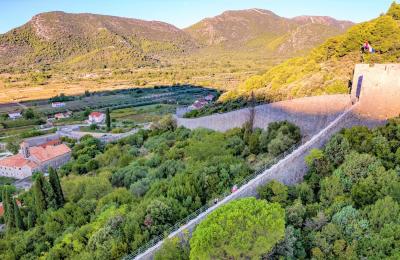
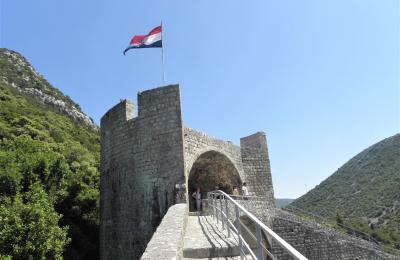

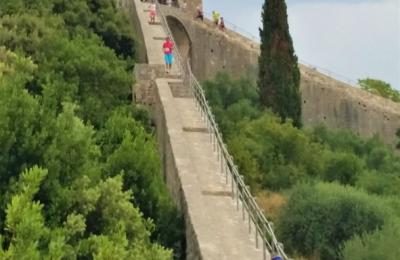



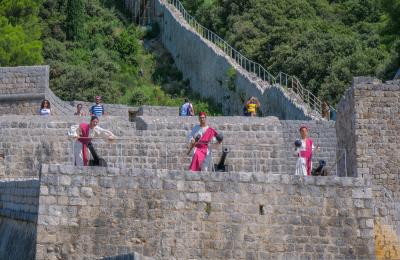

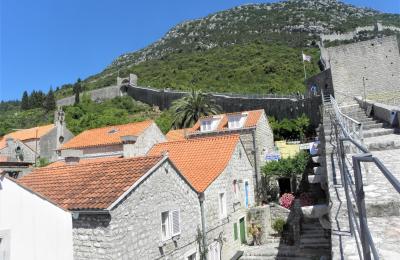
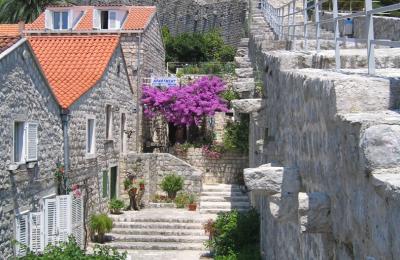
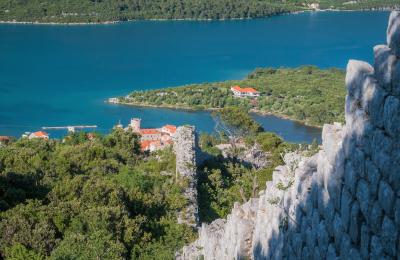
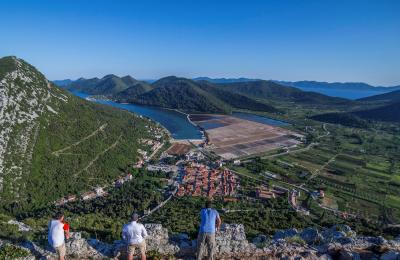
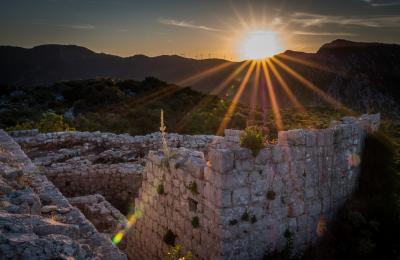
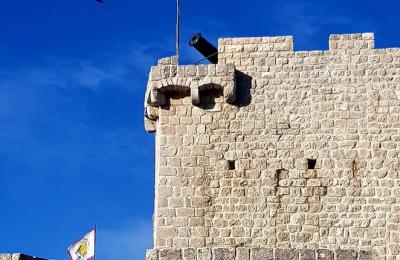

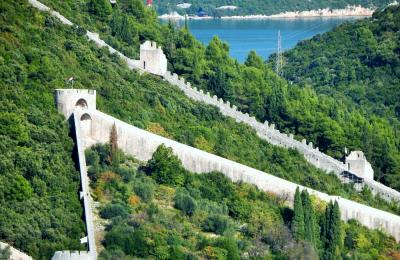
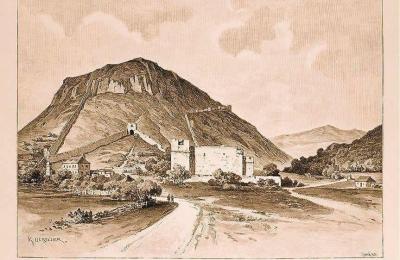
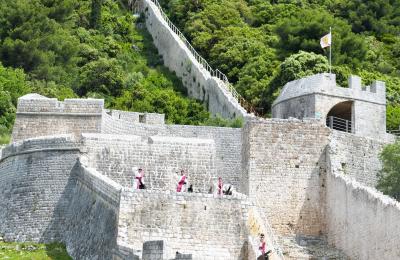
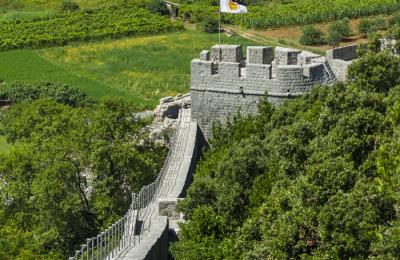
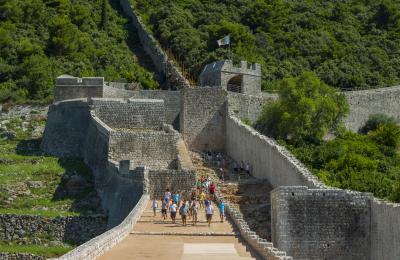

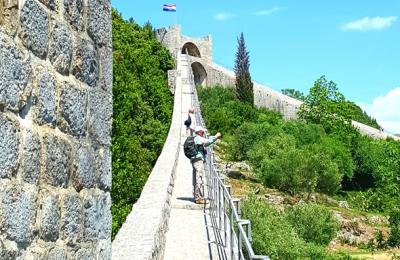
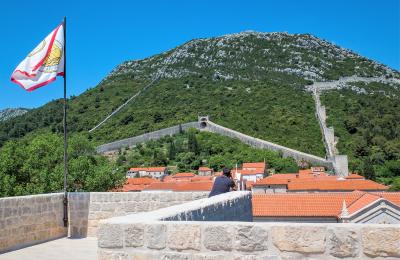
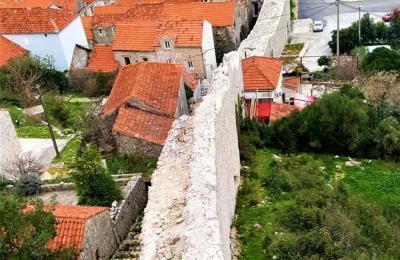
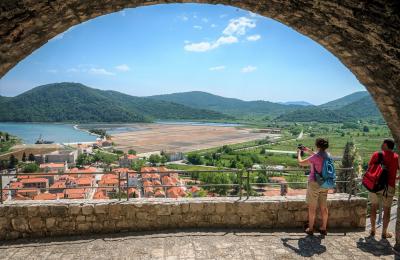
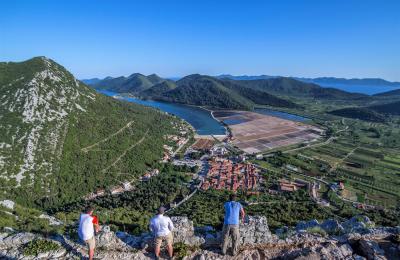
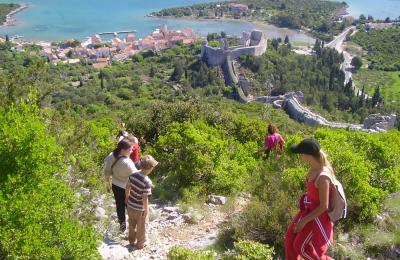
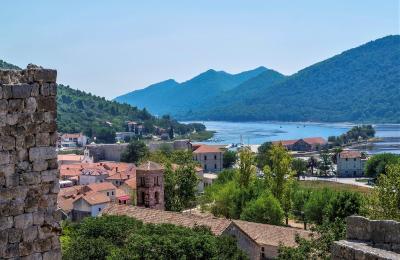
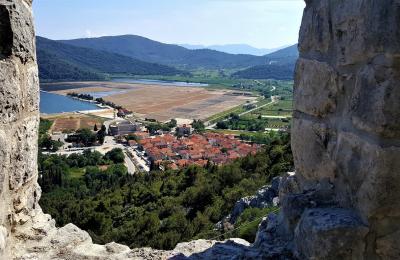
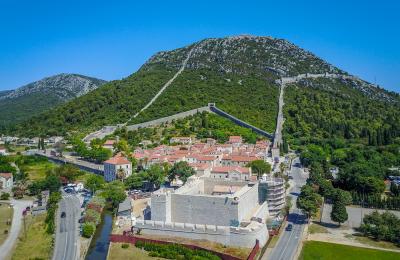
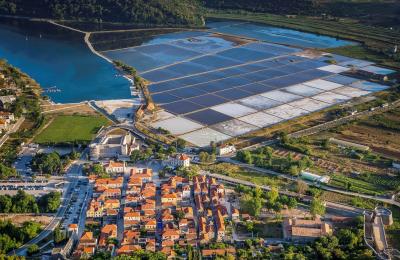
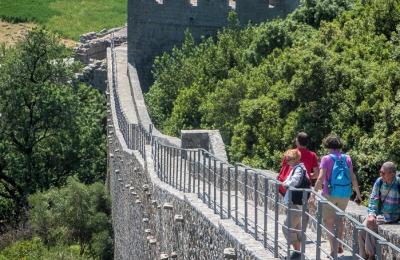
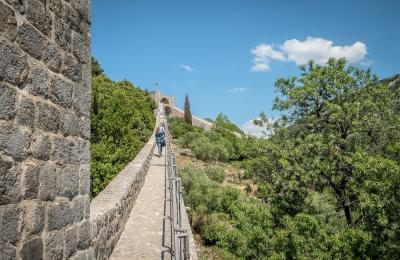
 Turistička zajednica općine Ston
Turistička zajednica općine Ston







 Povećaj font
Povećaj font Smanji font
Smanji font Crno bijelo
Crno bijelo Visoki kontrast
Visoki kontrast Negativni kontrast
Negativni kontrast Svjetla pozadina
Svjetla pozadina Podcrtane poveznice
Podcrtane poveznice